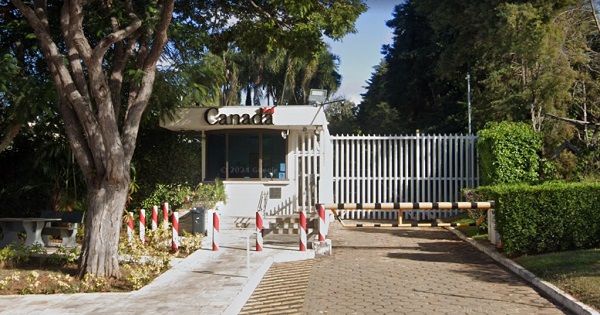Addictions
Canada is moving ever closer to euthanasia-on-demand without exceptions

From LifeSiteNews
As Canada expands its euthanasia regime, vulnerable individuals like the homeless, obese, and grieving are increasingly offered assisted suicide, countering claims that ‘safeguards’ ensure the protocol remains limited in its scope.
Canada’s suicide activists and euthanasia advocates promised the public that the path to “medical aid in dying” would be a narrow path with high guardrails. They were lying. It is a four-lane highway, and there’s nobody patrolling it.
Not a week goes by without some grim new development, and our government refuses to listen to those hoarsely sounding the alarm.
On October 16, the Associated Press covered the questions euthanasia providers are discussing on their private forums. One story featured a homeless man being killed by lethal injection:
One doctor wrote that although his patient had a serious lung disease, his suffering was “mostly because he is homeless, in debt and cannot tolerate the idea of (long-term care) of any kind.” A respondent questioned whether the fear of living in the nursing home was truly intolerable. Another said the prospect of “looking at the wall or ceiling waiting to be fed … to have diapers changed” was sufficiently painful. The man was eventually euthanized. One provider said any suggestion they should provide patients with better housing options before offering euthanasia “seems simply unrealistic and hence, cruel,” amid a national housing crisis.
Another featured a doctor debating whether obesity made someone eligible for assisted suicide:
One woman with severe obesity described herself as a “useless body taking up space” – she’d lost interest in activities, became socially withdrawn and said she had “no purpose,” according to the doctor who reviewed her case. Another physician reasoned that euthanasia was warranted because obesity is “a medical condition which is indeed grievous and irremediable.”
And perhaps the most chilling story of all is the case of a woman who was consistently pushed into accepting death:
When a health worker inquired whether anyone had euthanized patients for blindness, one provider reported four such cases. In one, they said, an elderly man who saw “only shadows” was his wife’s caregiver when he requested euthanasia; he wanted her to die with him. The couple had several appointments with an assessor before the wife “finally agreed” to be killed, the provider said. She died unexpectedly just days before the scheduled euthanasia.
Read that carefully: the couple had several appointments with the person assessing their eligibility for euthanasia before the wife “finally agreed” – that is, broke down and assented – to be euthanized. Other providers cited examples of people being euthanized for grief. It should be obvious to anyone looking at what is happening in Canada: there are no brakes on this train.
It just keeps getting worse. Linda Maddaford, the newly elected president of the Regina Catholic Women’s League, is sharing her family’s experience this month at the Catholic Health Association of Saskatchewan convention.
After her mother passed away, Maddaford’s family moved their father to a care facility in Saskatoon. “The very day after, we got a blanket email inviting us to come to a presentation in the dining room,” she said. The topic? Accessing euthanasia. Maddaford added that there is a “push from the top-down. That if you don’t – if you aren’t open to the idea; you should be. I worry for the people who feel the pressure of: ‘Well my doctor advised it.’ Or ‘someone with a clipboard came around and kept asking.’”
Another story, covered this month by the Telegraph, relayed the experience of a Canadian woman undergoing life-saving cancer surgery… who was offered assisted suicide by doctors as she was about to enter the operating room for her mastectomy.
None of these stories appear to give euthanasia activists pause. Instead, they are constantly pushing for more.
On October 16, the Financial Post published an editorial by Andrew Roman titled, “You should be able to reserve MAID service: Quebec is going to let people pre-order medical assistance in dying. Ottawa shouldn’t try to stop it. People should have that right.” Anyone still arguing about “rights” as Canadian physicians euthanize patients for grief, obesity, homelessness, disability, and a plethora of other conditions should not be taken seriously. But here’s Roman, arguing that if we don’t permit this, all kinds of elderly people with dementia will not be killed:
As Canada’s population continues to age, demand for MAiD – medical assistance in dying – will only increase. But, with rates of dementia also increasing, the cognitive ability of patients to consent becomes a barrier. The prevalence of dementia more than doubles every five years among seniors, rising from less than one per cent in those aged 65-69 to about 25 per cent among people 85 and older.
Then, revealing a breathtaking ignorance of how Canada’s euthanasia regime has unfolded, Roman writes this:
There is no good reason why, with the numerous safeguards in Ottawa’s and Quebec’s laws, patients should be precluded from making advance requests before their condition renders them incapable of giving consent; and no good reason why their physicians should become criminals for honouring their patients’ duly stipulated advance requests.
No good reason why? Safeguards? What a joke. He concludes:
MAiD is also regulated under provincial law and by the same medical colleges that regulate abortion. Ottawa should amend the Criminal Code to exempt MAiD altogether and, as is the case with abortion, let the medical profession do its work in accordance with provincial regulation and patients’ wishes.
And there you have it: the final goal of the euthanasia activists. Euthanasia on demand; doctors licensed to kill. We don’t have to ask ourselves what will happen if people like Roman get their way. It’s happening already.
Addictions
The War on Commonsense Nicotine Regulation

From the Brownstone Institute
Cigarettes kill nearly half a million Americans each year. Everyone knows it, including the Food and Drug Administration. Yet while the most lethal nicotine product remains on sale in every gas station, the FDA continues to block or delay far safer alternatives.
Nicotine pouches—small, smokeless packets tucked under the lip—deliver nicotine without burning tobacco. They eliminate the tar, carbon monoxide, and carcinogens that make cigarettes so deadly. The logic of harm reduction couldn’t be clearer: if smokers can get nicotine without smoke, millions of lives could be saved.
Sweden has already proven the point. Through widespread use of snus and nicotine pouches, the country has cut daily smoking to about 5 percent, the lowest rate in Europe. Lung-cancer deaths are less than half the continental average. This “Swedish Experience” shows that when adults are given safer options, they switch voluntarily—no prohibition required.
In the United States, however, the FDA’s tobacco division has turned this logic on its head. Since Congress gave it sweeping authority in 2009, the agency has demanded that every new product undergo a Premarket Tobacco Product Application, or PMTA, proving it is “appropriate for the protection of public health.” That sounds reasonable until you see how the process works.
Manufacturers must spend millions on speculative modeling about how their products might affect every segment of society—smokers, nonsmokers, youth, and future generations—before they can even reach the market. Unsurprisingly, almost all PMTAs have been denied or shelved. Reduced-risk products sit in limbo while Marlboros and Newports remain untouched.
Only this January did the agency relent slightly, authorizing 20 ZYN nicotine-pouch products made by Swedish Match, now owned by Philip Morris. The FDA admitted the obvious: “The data show that these specific products are appropriate for the protection of public health.” The toxic-chemical levels were far lower than in cigarettes, and adult smokers were more likely to switch than teens were to start.
The decision should have been a turning point. Instead, it exposed the double standard. Other pouch makers—especially smaller firms from Sweden and the US, such as NOAT—remain locked out of the legal market even when their products meet the same technical standards.
The FDA’s inaction has created a black market dominated by unregulated imports, many from China. According to my own research, roughly 85 percent of pouches now sold in convenience stores are technically illegal.
The agency claims that this heavy-handed approach protects kids. But youth pouch use in the US remains very low—about 1.5 percent of high-school students according to the latest National Youth Tobacco Survey—while nearly 30 million American adults still smoke. Denying safer products to millions of addicted adults because a tiny fraction of teens might experiment is the opposite of public-health logic.
There’s a better path. The FDA should base its decisions on science, not fear. If a product dramatically reduces exposure to harmful chemicals, meets strict packaging and marketing standards, and enforces Tobacco 21 age verification, it should be allowed on the market. Population-level effects can be monitored afterward through real-world data on switching and youth use. That’s how drug and vaccine regulation already works.
Sweden’s evidence shows the results of a pragmatic approach: a near-smoke-free society achieved through consumer choice, not coercion. The FDA’s own approval of ZYN proves that such products can meet its legal standard for protecting public health. The next step is consistency—apply the same rules to everyone.
Combustion, not nicotine, is the killer. Until the FDA acts on that simple truth, it will keep protecting the cigarette industry it was supposed to regulate.
Addictions
The Shaky Science Behind Harm Reduction and Pediatric Gender Medicine


By Adam Zivo
Both are shaped by radical LGBTQ activism and questionable evidence.
Over the past decade, North America embraced two disastrous public health movements: pediatric gender medicine and “harm reduction” for drug use. Though seemingly unrelated, these movements are actually ideological siblings. Both were profoundly shaped by extremist LGBTQ activism, and both have produced grievous harms by prioritizing ideology over high-quality scientific evidence.
While harm reductionists are known today for championing interventions that supposedly minimize the negative effects of drug consumption, their movement has always been connected to radical “queer” activism. This alliance began during the 1980s AIDS crisis, when some LGBTQ activists, hoping to reduce HIV infections, partnered with addicts and drug-reform advocates to run underground needle exchanges.
The Bureau is a reader-supported publication.
To receive new posts and support my work, consider becoming a free or paid subscriber.
In the early 2000s, after the North American AIDS epidemic was brought under control, many HIV organizations maintained their relevance (and funding) by pivoting to addiction issues. Despite having no background in addiction medicine, their experience with drug users in the context of infectious diseases helped them position themselves as domain experts.
These organizations tended to conceptualize addiction as an incurable infection—akin to AIDS or Hepatitis C—and as a permanent disability. They were heavily staffed by progressives who, influenced by radical theory, saw addicts as a persecuted minority group. According to them, drug use itself was not the real problem—only society’s “moralizing” norms.
These factors drove many HIV organizations to lobby aggressively for harm reduction at the expense of recovery-oriented care. Their efforts proved highly successful in Canada, where I am based, as HIV researchers were a driving force behind the implementation of supervised consumption sites and “safer supply” (free, government-supplied recreational drugs for addicts).
From the 2010s onward, the association between harm reductionism and queer radicalism only strengthened, thanks to the popularization of “intersectional” social justice activism that emphasized overlapping forms of societal oppression. Progressive advocates demanded that “marginalized” groups, including drug addicts and the LGBTQ community, show enthusiastic solidarity with one another.
These two activist camps sometimes worked on the same issues. For example, the gay community is struggling with a silent epidemic of “chemsex” (a dangerous combination of drugs and anonymous sex), which harm reductionists and queer theorists collaboratively whitewash as a “life-affirming cultural practice” that fosters “belonging.”
For the most part, though, the alliance has been characterized by shared tones and tactics—and bad epistemology. Both groups deploy politicized, low-quality research produced by ideologically driven activist-researchers. The “evidence-base” for pediatric gender medicine, for example, consists of a large number of methodologically weak studies. These often use small, non-representative samples to justify specious claims about positive outcomes. Similarly, harm reduction researchers regularly conduct semi-structured interviews with small groups of drug users. Ignoring obvious limitations, they treat this testimony as objective evidence that pro-drug policies work or are desirable.
Gender clinicians and harm reductionists are also averse to politically inconvenient data. Gender clinicians have failed to track long-term patient outcomes for medically transitioned children. In some cases, they have shunned detransitioners and excluded them from their research. Harm reductionists have conspicuously ignored the input of former addicts, who generally oppose laissez-faire drug policies, and of non-addict community members who live near harm-reduction sites.
Both fields have inflated the benefits of their interventions while concealing grievous harms. Many vulnerable children, whose gender dysphoria otherwise might have resolved naturally, were chemically castrated and given unnecessary surgeries. In parallel, supervised consumption sites and “safer supply” entrenched addiction, normalized public drug use, flooded communities with opioids, and worsened public disorder—all without saving lives.
In both domains, some experts warned about poor research practices and unmeasured harms but were silenced by activists and ideologically captured institutions. In 2015, one of Canada’s leading sexologists, Kenneth Zucker, was fired from the gender clinic he had led for decades because he opposed automatically affirming young trans-identifying patients. Analogously, dozens of Canadian health-care professionals have told me that they feared publicly criticizing aspects of the harm-reduction movement. They thought doing so could invite activist harassment while jeopardizing their jobs and grants.
By bullying critics into silence, radical activists manufactured false consensus around their projects. The harm reductionists insist, against the evidence, that safer supply saves lives. Their idea of “evidence-based policymaking” amounts to giving addicts whatever they ask for. “The science is settled!” shout the supporters of pediatric gender medicine, though several systematic reviews proved it was not.
Both movements have faced a backlash in recent years. Jurisdictions throughout the world are, thankfully, curtailing irreversible medical procedures for gender-confused youth and shifting toward a psychotherapy-based “wait and see” approach. Drug decriminalization and safer supply are mostly dead in North America and have been increasingly disavowed by once-supportive political leaders.
Harm reductionists and queer activists are trying to salvage their broken experiments, occasionally by drawing explicit parallels between their twin movements. A 2025 paper published in the International Journal of Drug Policy, for example, asserts that “efforts to control, repress, and punish drug use and queer and trans existence are rising as right-wing extremism becomes increasingly mainstream.” As such, there is an urgent need to “cultivate shared solidarity and action . . . whether by attending protests, contacting elected officials, or vocally defending these groups in hostile spaces.”
How should critics respond? They should agree with their opponents that these two radical movements are linked—and emphasize that this is, in fact, a bad thing. Large swathes of the public understand that chemically and surgically altering vulnerable children is harmful, and that addicts shouldn’t be allowed to commandeer public spaces. Helping more people grasp why these phenomena arose concurrently could help consolidate public support for reform and facilitate a return to more restrained policies.
Adam Zivo is director of the Canadian Centre for Responsible Drug Policy.
For the full experience, please upgrade your subscription and support a public interest startup.
We break international stories and this requires elite expertise, time and legal costs.
-

 Business2 days ago
Business2 days agoTrans Mountain executive says it’s time to fix the system, expand access, and think like a nation builder
-

 International2 days ago
International2 days agoBiden’s Autopen Orders declared “null and void”
-

 MAiD2 days ago
MAiD2 days agoStudy promotes liver transplants from Canadian euthanasia victims
-

 Business2 days ago
Business2 days agoCanada has given $109 million to Communist China for ‘sustainable development’ since 2015
-

 Internet2 days ago
Internet2 days agoMusk launches Grokipedia to break Wikipedia’s information monopoly
-

 Business2 days ago
Business2 days agoCanada’s combative trade tactics are backfiring
-

 Crime1 day ago
Crime1 day agoPublic Execution of Anti-Cartel Mayor in Michoacán Prompts U.S. Offer to Intervene Against Cartels
-

 Business2 days ago
Business2 days agoYou Won’t Believe What Canada’s Embassy in Brazil Has Been Up To









